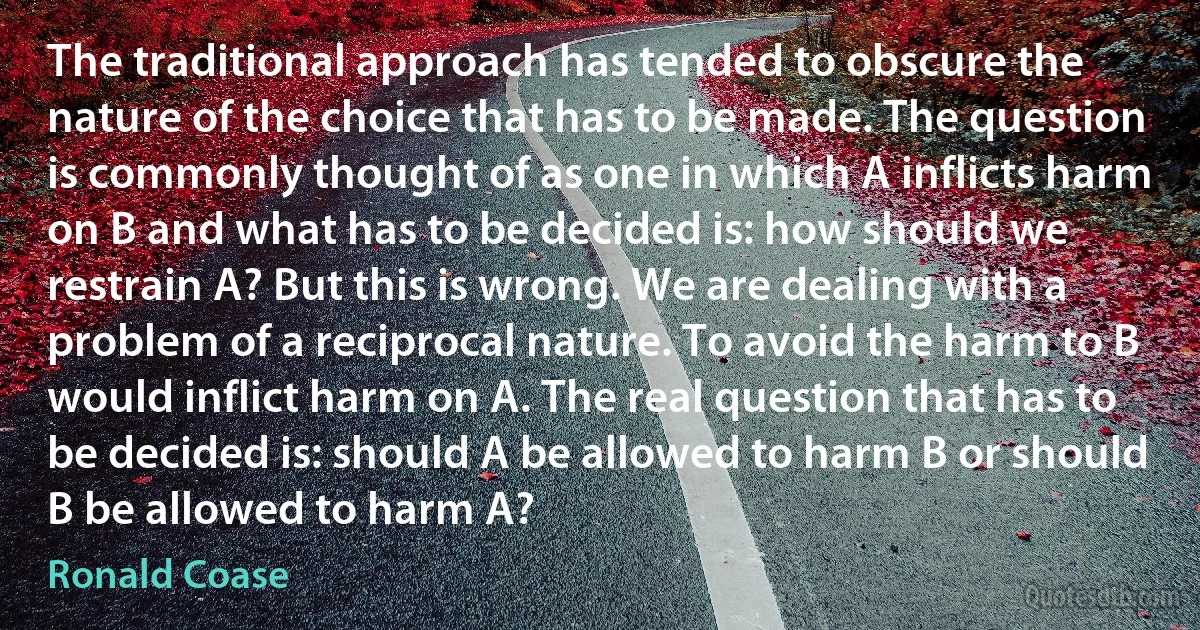
The traditional approach has tended to obscure the nature of the choice that has to be made. The question is commonly thought of as one in which A inflicts harm on B and what has to be decided is: how should we restrain A? But this is wrong. We are dealing with a problem of a reciprocal nature. To avoid the harm to B would inflict harm on A. The real question that has to be decided is: should A be allowed to harm B or should B be allowed to harm A?
Ronald CoaseRelated topics
approach choice harm nature problem question real reciprocal should thought traditional wrongRelated quotes
But those rare souls whose spirit gets magically into the hearts of men, leave behind them something more real and warmly personal than bodily presence, an ineffable and eternal thing. It is everlasting life touching us as something more than a vague, recondite concept. The sound of a great name dies like an echo the splendor of fame fades into nothing but the grace of a fine spirit pervades the places through which it has passed, like the haunting loveliness of mignonette.

James Thurber
O God, enlarge within us the sense of fellowship with all living things, even our brothers, the animals, to whom Thou gavest the earth as their home in common with us. We must remember with shame that in the past we have exercised the high dominion of man with ruthless cruelty so that the voice of the earth, which should have gone up to thee in song, has been a groan of pain. May we realize that they live, not for us alone, but for themselves and for Thee and that they love the sweetness of life.

Basil of Caesarea
Let no one out of laziness or continuous worldly occupations miss these holy Sunday gatherings, which God Himself handed down to us, lest he be justly abandoned by God... If you are detained and do not attend on one occasion, make up for it the next time, bringing yourself to Christ's Church. Otherwise you may remain uncured, suffering from unbelief in your soul because of deeds or words, and failing to approach Christ's surgery to receive... holy healing.

Gregory Palamas
I have thought a lot about the question of titles. I must confess that I find any for works that take off from an arbitrary starting point and end with something real.... [Miro allowed Pierre Matisse to make titles, based on the] real things.... [if they do] not evoke some tendency or other, something I want to avoid completely [very probably Miro meant here: the Surrealists ]. [advising Pierre Matisse; who showed then several modern European painters in New York].

Joan Miró
What I propose is that dialogue should take place among cultures and civilizations. And as a first step, I would suggest that cultures and civilizations should not be represented by politicians but by philosophers, scientists, artists and intellectuals.[...] Dialogue will lead to a common language and a common language will culminate in a common thought, and this will turn into a common approach to the world and global events.

Mohammad Khatami
